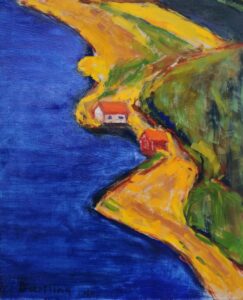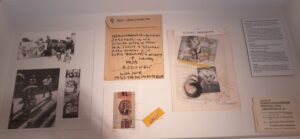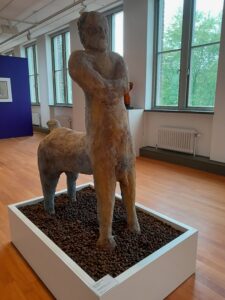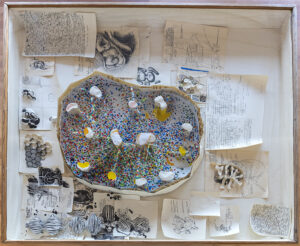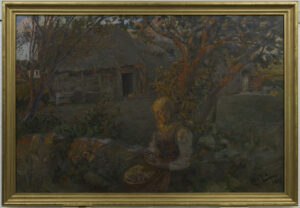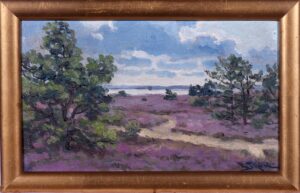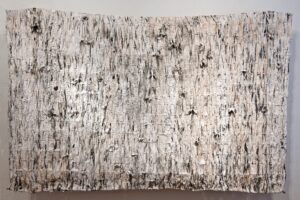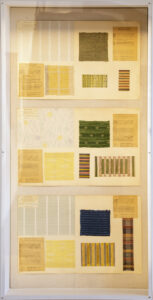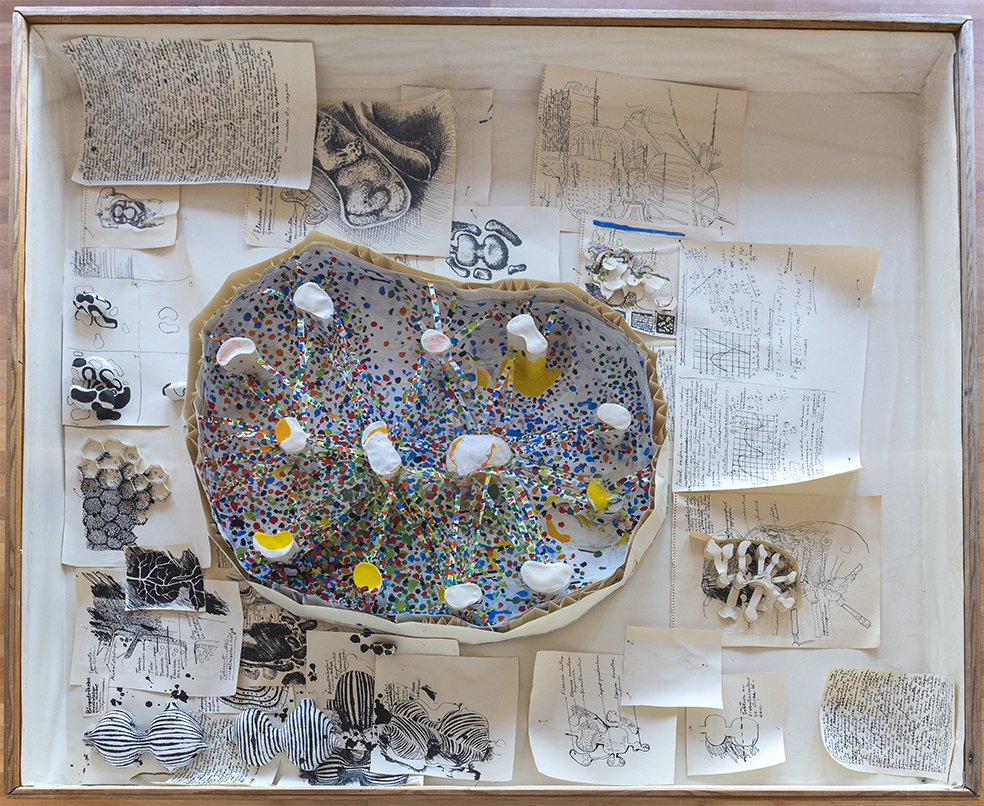Art and science – Olle Ängkvist, Bernt Jonasson and Erik Olson
In this section of the exhibition the theme is art and science. Right now it is about the human body, which through the ages has been of interest for artists as well as scientists. Sometimes in essentially different ways and sometimes with a similar approach, an investigation and a surge for new knowledge. In the middle of the room we see a work of art by Olle Ängkvist, which consists of a plexi glass case filled with drawn and sculpted forms, but also written notes. In the middle of the case is a three dimensional model in different colours which reminds one of something inside our bodies. Maybe cells, maybe neural pathways? Around it are other sculptural, organic shapes and sheets of paper with graphs, formulas and texts.
The piece gives a feeling of an ongoing research and even if the written notes are somewhat hard to read one of them for example says “All explorations seem already made, why this search for results? Or is it perhaps the searching and not the finding that is important? Then the goal would be insignificant, could be totally fictional, non-existent or at least meaningless”. During a period in the 1960:es Ängkvist worked intensely with exploring the body and especially its inside. “Like a kind of anatomical examination of creativity, a tall tale if you like” he expressed it himself. However he thought it all ended in chaos. He destroyed all the art works he had produced except for two plexi glass cases, of which this is one.
On the long wall close by is a painting by Bernt Jonasson. It also gives a feeling of being in some kind of laboratory. The canvas is filled with bodyparts, embryos, test tubes and in the middle a cut off head with an exposed brain. The motif reminds somewhat of Frankenstein and gives discomfort. The painting is one of several with surrealistically twisted hospital environments, which Jonasson made when he suffered from cancer.
The title of Erik Olsons painting translates “The morals of the bourgeoisie in confession”. It is more literal in its surrealism. We see a shell of a body, visualized by a jacket hung over a set of shelves, which form a torso. Inside there are no organs, such as a heart and lungs, but instead various objects. Where the heart would have been, for example, there is a dart board. A drop of blood flows from it. By its side is a Raphaelesque bookmark angel behind bars, which could symbolize locked feelings.
At the bottom of the torso, where the genitals would have been, is a frog, behind a nailed and locked locker. Surrealism was opposed to morals and bourgeoise hypocrisy, as the title implies, which also included sexual taboos.
On top, where the head would have been, are two stones, bound by a rope. A butterfly sails away towards the sky. It can be interpreted as a symbol of imagination and of the liberation from intellectual thinking, which was celebrated by surrealism. With strong influence from Freud and Jung surrealists rather said something about the inside of man and psychology, than about the outside and anatomy.
